Grow Asparagus Year Round? Yes, you read that right! Imagine stepping into your garden in the dead of winter and harvesting fresh, tender asparagus spears. Sounds like a dream, doesn’t it? Well, it doesn’t have to be! This article is your ultimate guide to extending your asparagus season and enjoying this delicious vegetable practically all year long.
Asparagus has been enjoyed for centuries, with evidence of its cultivation dating back to ancient Rome. The Romans prized it for its culinary and medicinal properties, and its popularity has only grown since then. Today, asparagus is a springtime delicacy, but with a few clever tricks and DIY hacks, you can break free from seasonal limitations.
Why is this DIY trick so important? Because fresh, homegrown asparagus tastes infinitely better than anything you can buy in the store! Plus, knowing exactly where your food comes from and how it’s grown is incredibly rewarding. We all crave fresh produce, and extending the asparagus season means more delicious meals, healthier eating habits, and a deeper connection to nature. So, let’s dive in and discover how you can grow asparagus year round and become the envy of all your gardening friends!
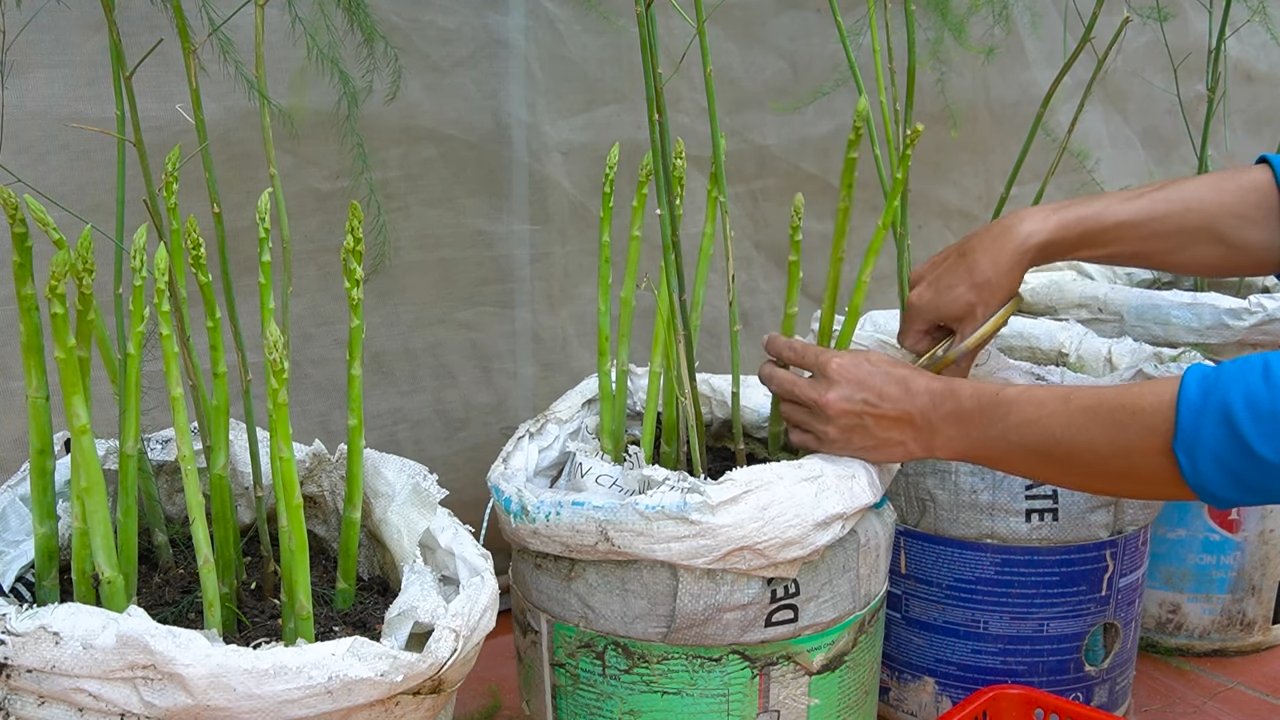
Spargel das ganze Jahr über selbst anbauen: So geht’s!
Hallo liebe Gartenfreunde! Habt ihr euch jemals gewünscht, frischen Spargel nicht nur im Frühling, sondern das ganze Jahr über ernten zu können? Ich zeige euch, wie ihr das mit ein bisschen Planung und den richtigen Techniken schaffen könnt. Es ist zwar nicht ganz einfach, aber mit meiner Anleitung und etwas Geduld werdet ihr bald euren eigenen Spargel genießen können, wann immer ihr wollt!
Die Grundlagen: Was Spargel zum Wachsen braucht
Bevor wir loslegen, ist es wichtig zu verstehen, was Spargel eigentlich braucht, um optimal zu wachsen. Spargel ist eine mehrjährige Pflanze, die etwas Geduld erfordert, bevor man die erste Ernte einfahren kann. Aber glaubt mir, es lohnt sich!
* Sonne: Spargel liebt die Sonne! Mindestens 6-8 Stunden direkte Sonneneinstrahlung pro Tag sind ideal.
* Boden: Gut durchlässiger, sandiger Lehmboden ist perfekt. Staunässe mag Spargel überhaupt nicht.
* Nährstoffe: Spargel ist ein Starkzehrer. Regelmäßige Düngung mit Kompost oder speziellem Spargeldünger ist wichtig.
* Geduld: Spargel braucht Zeit, um sich zu etablieren. Rechnet mit 2-3 Jahren, bevor ihr die erste volle Ernte einfahren könnt.
Die Strategie: Spargel ganzjährig anbauen
Um Spargel das ganze Jahr über zu ernten, müssen wir verschiedene Anbaumethoden kombinieren und die Wachstumsphasen des Spargels optimal nutzen. Hier ist der Plan:
* Frühbeet/Gewächshaus: Für die frühe Ernte im Frühjahr und die späte Ernte im Herbst.
* Freiland: Für die Hauptsaison im Frühling und Sommer.
* Forcing (Treiben): Für die Ernte im Winter.
Phase 1: Vorbereitung – Der Grundstein für den Erfolg
Die Vorbereitung ist das A und O für einen erfolgreichen Spargelanbau. Hier zeige ich euch, wie ihr den Boden vorbereitet und die richtigen Spargelpflanzen auswählt.
1. Boden vorbereiten:
* Wählt einen sonnigen Standort mit gut durchlässigem Boden.
* Entfernt Unkraut und Steine.
* Lockert den Boden tiefgründig auf (mindestens 30 cm).
* Verbessert den Boden mit Kompost, Sand und gegebenenfalls etwas Kalk. Der pH-Wert sollte zwischen 6,5 und 7,0 liegen.
* Formt Dämme, auf denen ihr den Spargel pflanzen werdet. Die Dämme sollten etwa 20-30 cm hoch und 30-40 cm breit sein.
2. Spargelpflanzen auswählen:
* Kauft 1- oder 2-jährige Spargelpflanzen (auch Spargelwurzeln genannt) von einer vertrauenswürdigen Gärtnerei.
* Achtet darauf, dass die Pflanzen gesund aussehen und gut entwickelte Wurzeln haben.
* Wählt Sorten, die für eure Region geeignet sind. Es gibt verschiedene Sorten, die sich in Geschmack, Erntezeitpunkt und Krankheitsresistenz unterscheiden. Beliebte Sorten sind ‘Huchels Leistung’, ‘Gijnlim’ oder ‘Ramires’.
Phase 2: Anpflanzen – Der Start in ein langes Spargelleben
Jetzt geht es ans Eingemachte: das Anpflanzen der Spargelpflanzen. Hier ist eine detaillierte Anleitung, damit eure Spargelpflanzen gut anwachsen.
1. Pflanzlöcher ausheben:
* Grabt auf den vorbereiteten Dämmen Pflanzlöcher, die etwa 20 cm tief und 30 cm breit sind.
* Der Abstand zwischen den Pflanzlöchern sollte etwa 40-50 cm betragen.
* Der Abstand zwischen den Dämmen sollte etwa 1,5 Meter betragen.
2. Spargelpflanzen einsetzen:
* Legt die Spargelpflanzen vorsichtig in die Pflanzlöcher.
* Verteilt die Wurzeln gleichmäßig im Loch.
* Bedeckt die Wurzeln mit Erde, so dass die Triebspitzen (die Augen) etwa 5-10 cm unter der Erdoberfläche liegen.
* Gießt die Pflanzen gut an.
3. Mulchen:
* Bedeckt die Dämme mit einer Schicht Mulch (z.B. Stroh, Holzhackschnitzel oder Rasenschnitt).
* Der Mulch hilft, die Feuchtigkeit im Boden zu halten, Unkraut zu unterdrücken und den Boden vor Temperaturschwankungen zu schützen.
Phase 3: Pflege – Damit der Spargel prächtig gedeiht
Die richtige Pflege ist entscheidend für eine reiche Spargelernte. Hier sind meine Tipps für die optimale Pflege eures Spargels.
1. Gießen:
* Gießt den Spargel regelmäßig, besonders in trockenen Perioden.
* Achtet darauf, dass der Boden nicht austrocknet, aber auch nicht zu nass ist.
2. Düngen:
* Düngt den Spargel im Frühjahr und Sommer mit Kompost oder speziellem Spargeldünger.
* Befolgt die Anweisungen auf der Düngerpackung.
3. Unkraut entfernen:
* Entfernt regelmäßig Unkraut, das um den Spargel wächst.
* Unkraut konkurriert mit dem Spargel um Nährstoffe und Wasser.
4. Spargelkäfer bekämpfen:
* Spargelkäfer können eine Plage sein. Kontrolliert eure Pflanzen regelmäßig auf Käfer und Larven.
* Sammelt die Käfer und Larven ab oder verwendet ein biologisches Insektizid.
5. Pflanzenschutz:
* Achtet auf Anzeichen von Krankheiten wie Spargelrost.
* Entfernt befallene Pflanzenteile und verwendet gegebenenfalls ein Fungizid.
Phase 4: Ernte – Der Lohn der Mühe
Nach 2-3 Jahren könnt ihr endlich die ersten Spargelstangen ernten! Hier zeige ich euch, wie ihr den Spargel richtig erntet, um die Pflanzen nicht zu schädigen.
1. Erntezeitpunkt:
* Im ersten Jahr nach dem Anpflanzen solltet ihr den Spargel noch nicht ernten, damit sich die Pflanzen gut entwickeln können.
* Im zweiten Jahr könnt ihr einige wenige Stangen ernten.
* Ab dem dritten Jahr könnt ihr dann die volle Ernte einfahren.
* Die Spargelernte beginnt in der Regel im April und endet traditionell am Johannistag (24. Juni).
2. Erntetechnik:
* Stecht den Spargel mit einem speziellen Spargelstecher (oder einem scharfen Messer) etwa 2-3 cm unter der Erdoberfläche ab.
* Achtet darauf, die umliegenden Stangen nicht zu beschädigen.
* Erntet nur die Stangen, die mindestens 20 cm lang sind und einen Durchmesser von mindestens 1 cm haben.
3. Nach der Ernte:
* Nach dem Ende der Erntezeit lasst ihr die Spargelpflanzen wachsen und sich entwickeln.
* Sie bilden dann grüne Triebe, die Photosynthese betreiben und Nährstoffe für das nächste Jahr speichern.
* Schneidet die Triebe erst im Herbst oder Winter ab, wenn sie braun und trocken sind.
Phase 5: Spargel im Frühbeet/Gewächshaus – Für die frühe und späte Ernte
Um die Spargelsaison zu verlängern, könnt ihr einen Teil eures Spargels im Frühbeet oder Gewächshaus anbauen.
1. Anpflanzen:
* Pflanzt die Spargelpflanzen im Herbst in Töpfe oder Kübel.
* Verwendet eine gut durchlässige Erde.
* Stellt die Töpfe oder Kübel ins Frühbeet oder Gewächshaus.
2. Pflege:
* Gießt die Pflanzen regelmäßig.
* Düngt die Pflanzen bei Bedarf.
* Lüftet das Frühbeet oder Gew
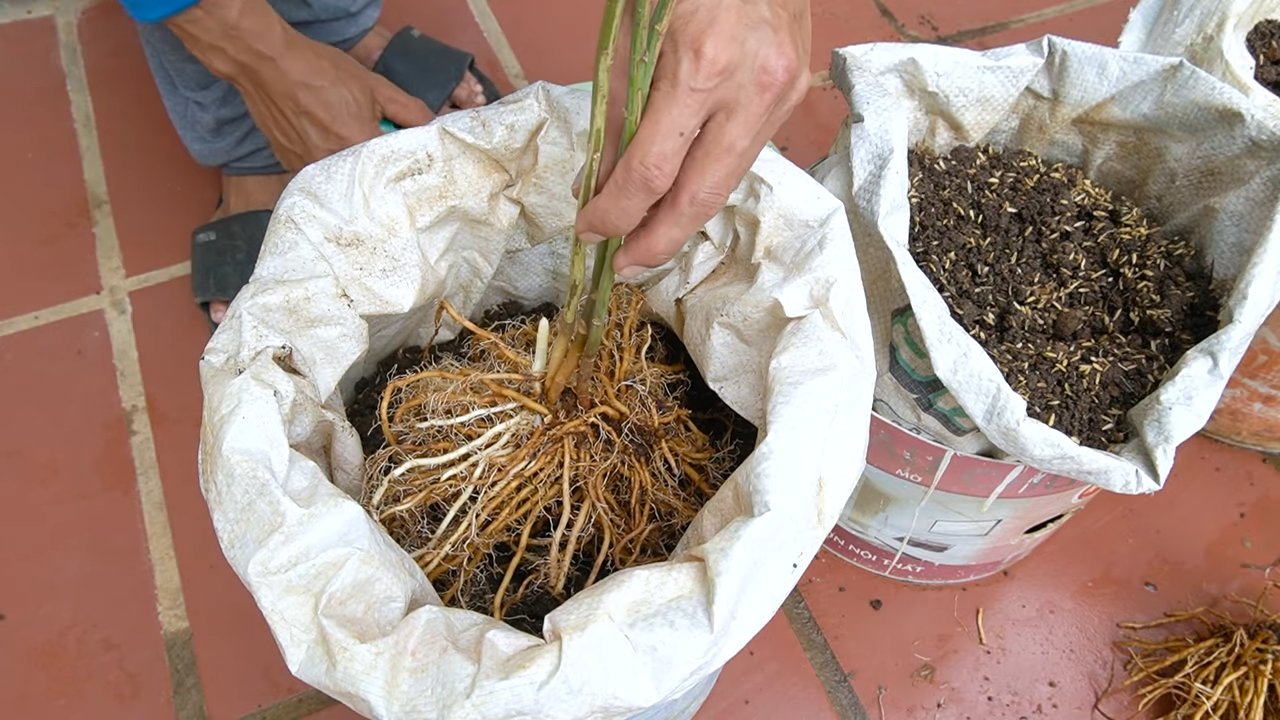
Conclusion
So, there you have it! Growing asparagus year-round might seem like a feat reserved for seasoned gardeners, but with this simple DIY trick, you can enjoy fresh, tender spears even when the snow is falling outside. This method isn’t just about extending your harvest; it’s about taking control of your food source, reducing your reliance on grocery store produce, and experiencing the unparalleled satisfaction of nurturing your own food from seed to table.
Why is this DIY trick a must-try? Because it’s surprisingly accessible, cost-effective, and yields incredibly rewarding results. Imagine the delight of serving a vibrant asparagus dish in the middle of winter, knowing that you cultivated it yourself. The flavor of homegrown asparagus, bursting with freshness and sweetness, is simply unmatched by anything you can buy in a store. Plus, you’ll be avoiding the pesticides and long-distance transportation often associated with commercially grown produce.
But the benefits extend beyond just taste and convenience. Growing your own asparagus is a fantastic way to connect with nature, relieve stress, and learn new skills. It’s a project that the whole family can enjoy, fostering a sense of accomplishment and appreciation for the natural world. And let’s not forget the environmental impact – by growing your own food, you’re reducing your carbon footprint and contributing to a more sustainable lifestyle.
Ready to take your asparagus game to the next level? Here are a few suggestions and variations to consider:
* Experiment with different varieties: While Jersey Knight is a popular choice, explore other asparagus varieties like Purple Passion or Mary Washington to discover your personal favorite. Each variety offers a unique flavor profile and growth habit.
* Enhance your soil: Asparagus thrives in well-drained, nutrient-rich soil. Consider adding compost, aged manure, or other organic matter to improve soil fertility and drainage.
* Optimize your lighting: If you’re growing asparagus indoors, ensure that your plants receive adequate light. Supplement natural light with grow lights if necessary to promote healthy growth.
* Consider companion planting: Plant asparagus alongside compatible plants like tomatoes, basil, or parsley to deter pests and improve overall garden health.
* Hydroponic Asparagus: For those with limited space or a penchant for modern gardening techniques, consider exploring hydroponic asparagus cultivation. This method allows you to grow asparagus without soil, using nutrient-rich water solutions.
Don’t be intimidated by the prospect of growing asparagus year-round. This DIY trick is designed to be simple and straightforward, even for beginners. With a little patience and attention, you’ll be harvesting delicious asparagus in no time.
We encourage you to try this DIY trick and share your experience with us! Post photos of your asparagus harvest on social media using #YearRoundAsparagus and let us know what you think. We’re eager to hear your tips, tricks, and success stories. Let’s build a community of asparagus enthusiasts and inspire others to embrace the joy of homegrown food. So, grab your seeds, prepare your soil, and get ready to enjoy fresh asparagus all year long! The journey to year-round asparagus abundance starts now!
Frequently Asked Questions (FAQ)
What is the best time of year to start growing asparagus?
While this article focuses on year-round growing, traditionally, asparagus is planted in the spring or fall. Starting seeds indoors in late winter or early spring allows you to get a head start on the growing season. For fall planting, aim to get your crowns in the ground several weeks before the first expected frost. However, with the indoor growing method described, you can essentially start at any time of year, controlling the environment to mimic optimal growing conditions.
How long does it take for asparagus to mature and produce spears?
Asparagus is a perennial plant, meaning it lives for many years. However, it typically takes 2-3 years from planting crowns (or longer from seed) before you can harvest spears. This is because the plant needs time to establish a strong root system. During the first year, focus on allowing the plant to grow and develop without harvesting any spears. In the second year, you can harvest a few spears for a short period. By the third year, you can enjoy a more substantial harvest. The year-round growing method aims to accelerate this process by providing a controlled environment.
What kind of soil is best for growing asparagus?
Asparagus prefers well-drained, sandy loam soil with a pH between 6.0 and 7.0. It’s crucial to avoid heavy clay soils that retain too much moisture, as this can lead to root rot. Before planting, amend your soil with plenty of organic matter, such as compost or aged manure, to improve drainage and fertility. Adding a layer of mulch around the plants can also help retain moisture and suppress weeds.
How much sunlight does asparagus need?
Asparagus requires at least 6-8 hours of direct sunlight per day to thrive. If you’re growing asparagus indoors, you may need to supplement natural light with grow lights to ensure that your plants receive adequate illumination. Position your grow lights close enough to the plants to provide sufficient light intensity, but not so close that they burn the foliage.
How often should I water asparagus?
Asparagus needs consistent moisture, especially during the growing season. Water deeply whenever the top inch of soil feels dry to the touch. Avoid overwatering, as this can lead to root rot. During the dormant season, reduce watering frequency. When growing indoors, monitor the soil moisture levels closely and adjust watering accordingly.
What are some common pests and diseases that affect asparagus?
Asparagus beetles are a common pest that can damage asparagus spears and foliage. Other potential pests include aphids, spider mites, and cutworms. Common diseases include asparagus rust, fusarium crown and root rot, and purple spot. To prevent pest and disease problems, practice good garden hygiene, such as removing weeds and debris, and ensure proper air circulation. You can also use organic pest control methods, such as insecticidal soap or neem oil, to manage infestations.
How do I harvest asparagus spears?
Harvest asparagus spears when they are about 6-8 inches tall and have tightly closed tips. Use a sharp knife or asparagus knife to cut the spears at or slightly below the soil surface. Avoid damaging the crown of the plant when harvesting. Harvest spears regularly during the harvest season to encourage continued production.
Can I grow asparagus in containers?
Yes, you can grow asparagus in containers, but you’ll need to choose a large container (at least 18 inches in diameter) to accommodate the plant’s extensive root system. Use a well-draining potting mix and provide adequate sunlight and water. Container-grown asparagus may require more frequent fertilization than asparagus grown in the ground.
How do I overwinter asparagus plants?
In colder climates, asparagus plants will go dormant in the fall. Cut back the foliage to the ground after it turns brown and yellow. Apply a layer of mulch to protect the crown of the plant from freezing temperatures. In the spring, remove the mulch and allow the new spears to emerge. The indoor growing method eliminates the need for overwintering, as you can maintain a consistent growing environment year-round.
What are the nutritional benefits of asparagus?
Asparagus is a nutrient-rich vegetable that is low in calories and high in vitamins and minerals. It is a good source of vitamin K, folate, vitamin C, and vitamin A. Asparagus also contains antioxidants and fiber, which can promote overall health and well-being.

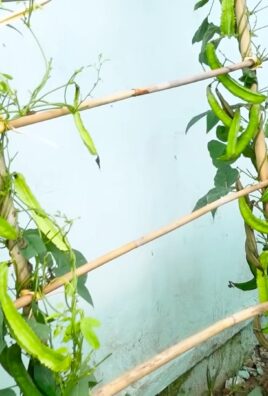
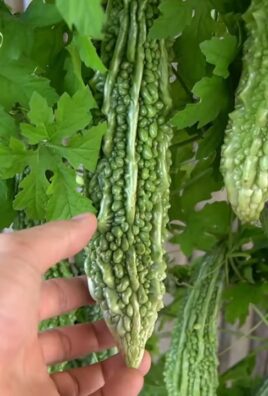
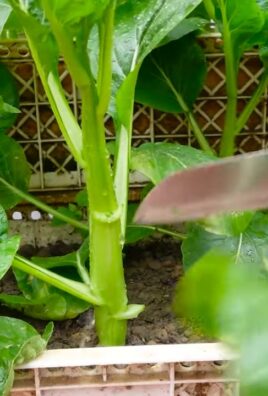
Leave a Comment